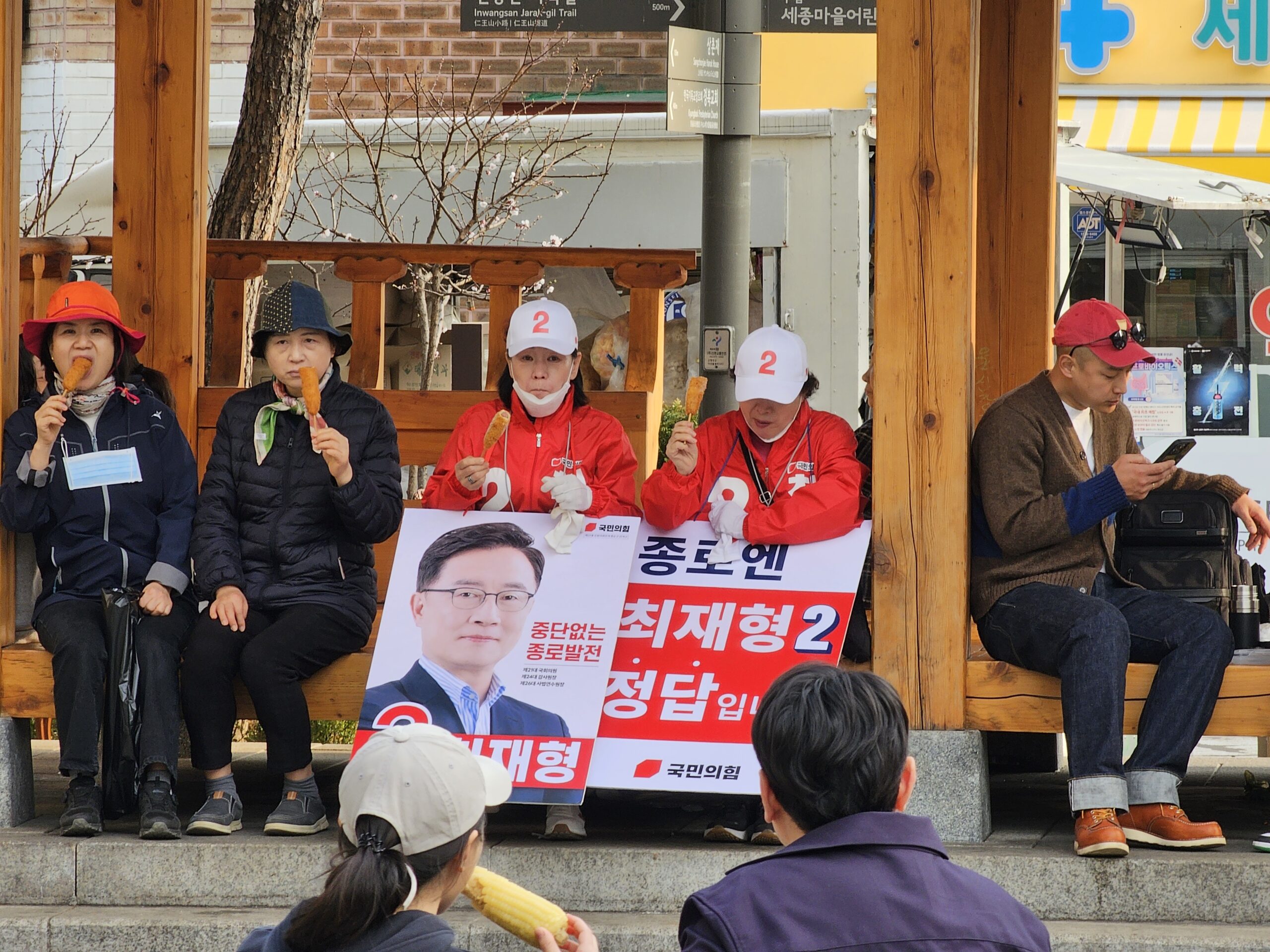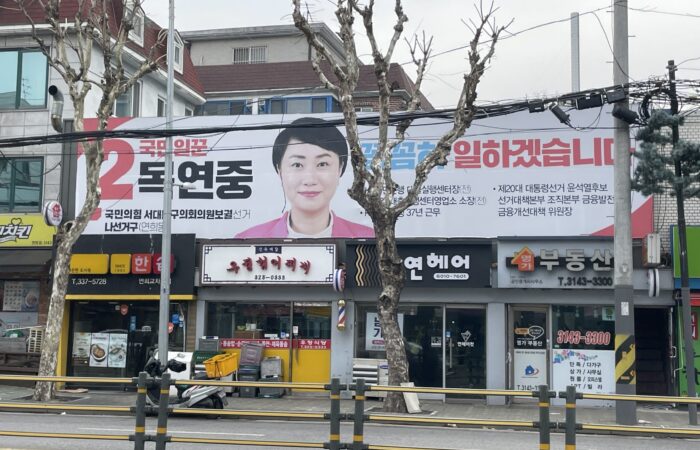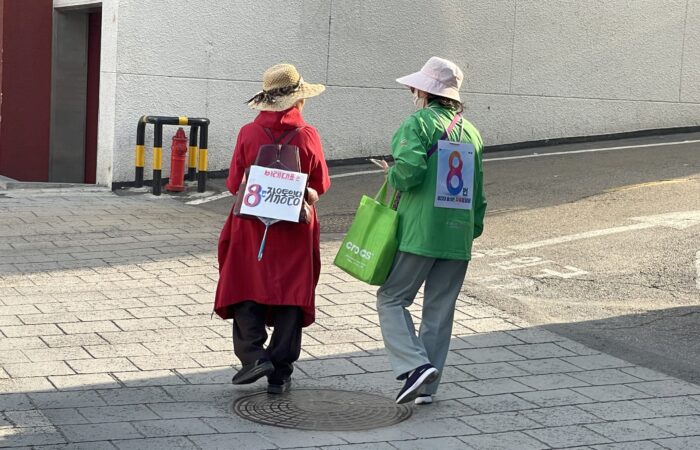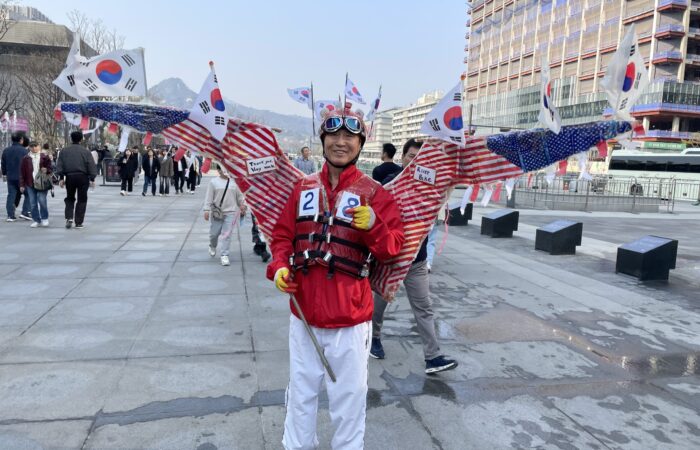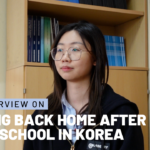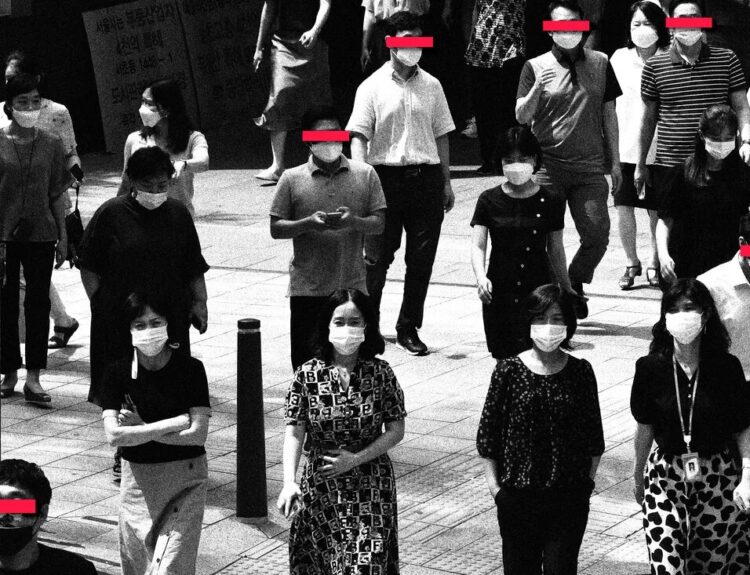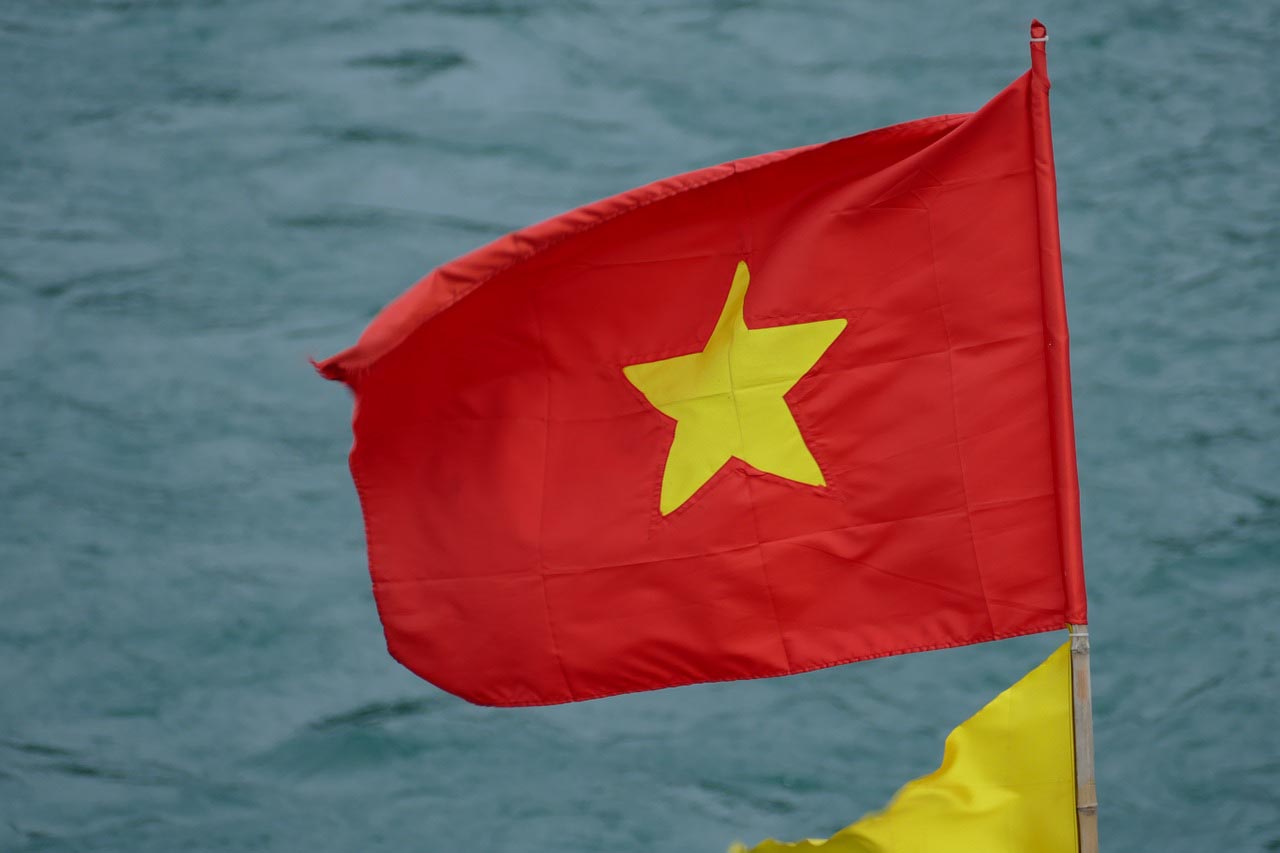On the 10th of April 2024, the 22nd legislative elections set the stage for the next four years of political play in the National Assembly of South Korea. Even though strict regulations govern the smallest details of the electoral process, which the National Election Committee monitors, political campaigns in South Korea have evolved from its humble undemocratic nature since the first polls in 1948. Electioneering, which is to actively participate in an election campaign’s activities, has become its own kind of public performance with its own peculiarities. In this article, we will guide you through the political campaigns by diving deeper into the material culture of South Korean electioneering.
Throughout the country, the elections are made visible through vibrant posters and banners hung around the necks of campaigners, streetcorners, and even entire building facades.
A TL;DR on Korean Parliamentary history
Though the first Parliamentary elections in Korea were held in 1948, they were hardly democratic. Under pressure from Cold War dynamics, the ideological polarisation of the Korean nation had a great impact on the course of the elections. Though both presidential and parliamentary elections continued, with several military coups and dictatorial measures, South Korea does not deserve first prize for most robust democracy. It took until 1987 before direct presidential elections were secured through a new constitution, reconfirming the power division between parliament and the president. Since then, South Korea had several peaceful transfers of power between left and right-wing parties in both parliament and presidential office, making it one of the most robust democracies in East Asia.
Names such as “Animal Assembly” [동물국회] are used to describe the large physical brawls that break out in the National Assembly when the debate gets too heated; and “Plant Parliament” [식물국회] denotes the low number of laws being passed due to partisan politics, with mixed opinions on the effectivity of the parliament itself. As such, there are plenty of reasons for politicians to actively shake hands and kiss babies during the campaign period and boost their image.
The Korean National Assembly is dominated by two big parties, the People’s Power Party (PPP) ruling and the Democratic Party of Korea (DPK) in opposition. Together with a few other parties, the opposition had 192 seats out of a total of 300 seats.
For the election, these 300 seats are divided over 254 electoral districts while 46 are elected through proportional representation. The public thus votes for a specific district candidate that will take up one of the 254 seats while also separately voting for a specific political party that runs for the proportional representation seats. Once the votes have been counted, the 46 seats are then divided over these parties proportionally. Candidates therefore either run campaigns only within a particular district or are on the list for the party that runs in the proportional representation.
The main target for both government and opposition is to reach either 150, 180, or even a 200-seat majority. With every increasing threshold, much more legislative wiggle room can be acquired, such as rights to appoint heads of different offices and judges, forcefully ending fillibusters, advancing bills through committees to the plenary session for unilateral passage without the need for cooperation, or even amending the constitution.
Campaign cars, loudspeakers, and altered K-pop songs
To have the people hear their promises, politicians will use all auditory means possible to reach the public. If you’re new to the South Korean political scene, one of the first things you might notice during the campaign period is the sudden increase of random phone calls from unknown numbers. Campaign teams and public opinion polling services will cycle through as many phone numbers as possible and this can lead to quite some frustration: endless phone calls from random numbers throughout the day, every day during the campaign period will surely drive anyone insane. The problem with this form of campaigning is that it is almost guaranteed to be illegal. SBS News in an analysis revealed that the phone numbers in the databases used are most likely not gathered with the right permission. This is, however, only a violation of the privacy law as the election law does not provide for any limitations on acquisition routes; neither are there any legal limitations to the number of phone calls or messages that candidates can send. The National Election Committee therefore has a difficult time limiting this form of electioneering.
Another staple of Korean elections is the use of cars with loudspeakers, some almost resembling parade floats, driving through the districts. Some of them only feature large LCD screens showing campaign videos, while others include entire dance teams. The lyrics of popular K-pop songs are even co-opted and changed to promote certain policies of the candidate and garner the attention of the public. These songs are then blasted throughout busy intersections, often with both rival candidate teams present, creating a flurry of inaudible campaign promises, albeit one with a festive feel. Political camps have to request access to copyright from the Korea Music Copyright Association, which had to form an entire task force to deal with the many requests from candidates pouring in during the month before the elections.
A more recent addition to the usual repertoire is the use of short videos, with candidates imitating viral memes becoming a well-established means of spreading their message. Many candidates upload their take on dances, phrases, and edits, hoping to catch the attention of the youth. Some politicians actively call for people who live in their district to follow them and send them private messages with their concerns and wishes. A report from July 2023 by Daehaknaeil showed that 90% of Gen Z and 79.4% of millennials are actively on short-form platforms, such as TikTok or Instagram Reels, and politicians seem to have caught on.
Tasting the People: Teokbokki at the local market
Another staple of the South Korean campaign season is “tasting the people,” in this case, metaphorically. Candidates usually visit local markets where they have a bite of “the people’s taste” to show their affinity with the local population, proving that they would also listen to their particular concerns, and creating an image of approachability.
The support of well-organised merchants and shopowners can help candidates gain an edge in the vote count. But this form of campaigning is not limited to election season. In December 2023, President Yoon also visited a local market in Busan together with the heads of major conglomerates to promise support for the locals after the loss of the World Expo 2030 bid.
Due to the street food tasting ceremonies becoming an electioneering routine, the public has increasingly started to call out the certain hypocrisy of the performance, among them food columnist Hwang Kyo-ik. In a post on his personal Facebook account, Hwang pointed out that the scenes at the markets reminded him of “the era of monarchies and the practice of inspecting the people’s living conditions.” Kings and Mmonarchs worldwide used to inspect their citizens through the rare visits outside of their palaces, a parallel we see in the practices of South Korea’s prominent government officials today. These modern-day politician market visits have the same formula: a lot of performance for Habermasian symbolic representation and status, with plenty of security and cameras, which only disrupt the daily flow of goods in the market.
Instead, nowadays, locals of the area can be seen more often, carrying placards of their candidate, still consuming the street food, this time with no listening ear for the concerns of the people.
The stakes
These elections were right around the turn of the second year of the Yoon Suk-yeol presidency, thus serving as the public’s verdict on his term so far. His low approval rating and in-fighting between the president and the leader of his party, the PPP set the tone. The chance that the National Assembly would remain majority opposition for the rest of his 5-year term meant the stakes were high for the ruling and opposition parties. The opposition had some new flavours, with two new parties emerging on the political scene: New Reform and Rebuilding Korea. Both parties are spearheaded by controversial figures, with respectively Lee Jun-seok, ousted from the PPP, and Cho Kuk, ousted from the DPK, leading the new parties.
So with a lot of fanfare and racket, the 22nd general elections came to an end. The results are out, the campaign songs are forgotten, and the speaker cars are back in their garages. With a voter turnout of 67%, the highest since the general elections of 1992, South Korea has chosen its next parliamentary representatives. The opposition has acquired 192 seats, both new parties have acquired enough votes to take a few seats in the parliament, and for the first time in Korea’s constitutional history, there will have been a majority opposition for the entire presidential term. The hope now left on the bottom of the empty well of campaign money is that the freshly elected legislative power will keep their promises that were so loudly proclaimed through the streets.

